Preserved Mixtec Codices: Codex Zouche-Nuttall – Beautiful ‘Folding Screen Of Historical Events Of Mixtec People Of Oaxaca
A. Sutherland - AncientPages.com - The Mixtec people of Oaxaca referred to books as the ‘tutu’, which also meant – ‘paper’ and in the 16th century, they called their codices ‘tonindeye’, (‘the history of families’), or ‘naandeye’ or (‘memories of the past’).
Two folding pages of Codex Zouche-Nuttall, Mixtec, Postclassic. Image source
Their codices were made from strips of paper, bark, cloth, or deerskin, about 13 feet long and about 6 inches high and folded like a harmonica, in the so-called accordion-style pleats, so that when opened, the reader saw two pages at a time.
The two outer pages were glued to pieces of wood that served as covers. Depending on the used material the pages were made, they had their specific names: ‘holy paper’, ‘holy skin’, or others.
It is possible that the adjective for sanctity was added due to the fact that the books largely related to mythology.
Only a few of the pre-Columbian Mixtec books have been preserved to this day and all four are devoted to historical events. These codices are the Codex Zouche-Nuttall, the Codex Selden, the Codex Colombino-Becker, the Codex Waecker-Gotter, the Codex Bodley, and the Codex Vindobonensis (or Vienna, as it is sometimes called).
Eight Deer Jaguar Claw (right) in meeting with Four Jaguar, depicted in the Codex Zouche-Nuttall. Image source
Some of these codices were taken to Europe and their names refer to their present locations (the Dresden Codex or Paris Codex) but these are not their original names.
One of the best-known Mixtec codices with beautiful Mixtec pictograms is the Zouche-Nuttal Codex from Teozacualco that contains 47 cards, approximately 23.5 cm wide and 19 cm tall and now, stored in the British Museum. Its one side is about the history of the Tilantongo, Teozaocalco, important alliances and conquests of several 11th and 12th century Mixtec rulers; the other side is a biography of Mixtec ruler, the 8th deer, Jaguar's Claw.
Pre-Hispanic scribes at work preparing different colors. Image credit: mexicolore.co.uk
In his book ‘Empires of Time: Calendars, Clocks, and Cultures’, Anthony F. Aveni gives is a vision of the Codex Zouche-Nuttal, a beautiful ‘folding screen’ text describing historical events of the Mixtec people.
“… The scene depicts a group of aristocratic individuals who probably represent the ancestors of local rulers… Like the heroes of the Popol Vuh, each figure, labeled by his or her calendar name, proceeds from one event to the next in a sinuous journey across the pages of time…”
Codices – How Were They Made?
If made of skin, the pieces of previously cleaned and hairless deerskin (or fork skin) about 50 to 100 cm long, were glued in such a way to obtain a belt with the desired dimensions.
The surfaces of the documents were usually hardened with diverse chemicals before the pages were covered with paintings. Among usually used colors was the red dye from powdered cactus juices (Dactylopius coccus, the gray color was obtained from the mixture of charcoal black dye with calcium carbonate and another popular color, the dark-yellow paint possibly originated from plants such as the butterfly bush (Buddleia) or others. Other colors were obtained by blending colors and their combinations.
Layout Of Contents In The Mixtec Codices
Contents in the Mixtec manuscripts are arranged horizontally, along the entire length of the document, while the text is clearly marked by red lines. Additionally, the scribes added separate registers on individual pages. Reading continues in the place where the line is not tightened to the edge of the card. The information of weddings, wars, alliances, births, conflicts, and kinships, are all, arranged in chronological order and the scribes used the day dates of the 260-day year provided with the name of the 365-day year within 52-year cycles.
Cotton Was Used To Record Historical Documents
The so-called ‘lienzos’ – (cotton cloth) covered with historical events were usually stretched on the floor or hung on the walls.
The Mixtec ceremonial vessels (some found during excavations of the graves of Monte Alban) were also decorated with ornaments that displayed important events.
The Aztecs and other people of central Mexico also produced codices, after the Spanish arrived. These looked more like modern books than the older ones, folded like a harmonica.
This literature, however, including archaeological findings shed light on life of Mexico and the entire Mesoamerica.
Written by – A. Sutherland AncientPages.com Staff Writer
Copyright © AncientPages.com All rights reserved. This material may not be published, broadcast, rewritten or redistributed in whole or part without the express written permission of AncientPages.com
Expand for referencesMore From Ancient Pages
-
 Were Neanderthals Really As Well Adapted To A Life In The Cold As Previously Assumed? New Study
Archaeology | Apr 26, 2022
Were Neanderthals Really As Well Adapted To A Life In The Cold As Previously Assumed? New Study
Archaeology | Apr 26, 2022 -
 Unique discovery of unknown inscription may change the history of scripts as we know it.
News | Aug 23, 2015
Unique discovery of unknown inscription may change the history of scripts as we know it.
News | Aug 23, 2015 -
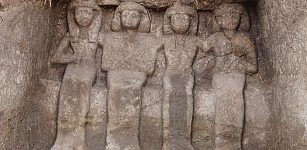 Niches With Six Figures Cut In Rock Discovered At Gebel Al-Silsila, Aswan
Archaeology | Dec 27, 2015
Niches With Six Figures Cut In Rock Discovered At Gebel Al-Silsila, Aswan
Archaeology | Dec 27, 2015 -
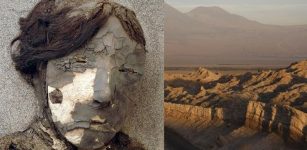 Mystery Of The Chinchorro Civilization And The World’s Oldest Mummies
Civilizations | Dec 27, 2016
Mystery Of The Chinchorro Civilization And The World’s Oldest Mummies
Civilizations | Dec 27, 2016 -
 Why Is Caganer, The Pooping Man Part Of The Catalonian Christmas Tradition And Nativity Scene?
Christmas Traditions | Dec 18, 2024
Why Is Caganer, The Pooping Man Part Of The Catalonian Christmas Tradition And Nativity Scene?
Christmas Traditions | Dec 18, 2024 -
 Major Puzzle In Mammal Skull Shape Evolution Solved
Evolution | Dec 20, 2023
Major Puzzle In Mammal Skull Shape Evolution Solved
Evolution | Dec 20, 2023 -
 Melisandre, The Red Woman: The History Behind Game Of Thrones’ Mysterious Mystic
Featured Stories | Jun 19, 2019
Melisandre, The Red Woman: The History Behind Game Of Thrones’ Mysterious Mystic
Featured Stories | Jun 19, 2019 -
 Capoeira: Ancient Martial Art Disguised As A Dance Became A Symbol Of Resistance To Oppression
Ancient History Facts | Jun 8, 2018
Capoeira: Ancient Martial Art Disguised As A Dance Became A Symbol Of Resistance To Oppression
Ancient History Facts | Jun 8, 2018 -
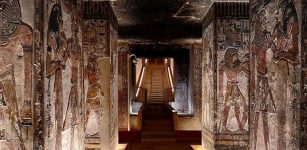 Why Pharaoh Seti I’s Tomb Had To Be The Most Glorious And Largest Ever Built In Valley Of The Kings
Featured Stories | Jun 19, 2021
Why Pharaoh Seti I’s Tomb Had To Be The Most Glorious And Largest Ever Built In Valley Of The Kings
Featured Stories | Jun 19, 2021 -
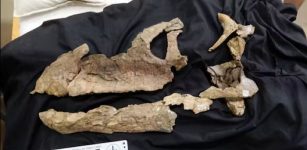 First Near-Complete Sauropod Dinosaur Skull Found In Australia Hints At Ancient Links Between Continents
Featured Stories | Apr 13, 2023
First Near-Complete Sauropod Dinosaur Skull Found In Australia Hints At Ancient Links Between Continents
Featured Stories | Apr 13, 2023 -
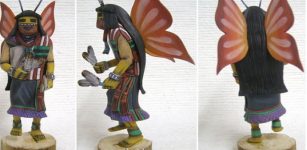 Butterfly: Powerful Ancient Symbol Of Beauty, Transformation, Hope, Rebirth And Happiness Featured In Myths And Legends
Ancient Symbols | Sep 26, 2019
Butterfly: Powerful Ancient Symbol Of Beauty, Transformation, Hope, Rebirth And Happiness Featured In Myths And Legends
Ancient Symbols | Sep 26, 2019 -
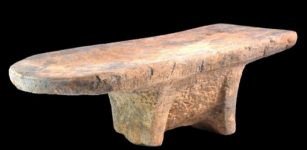 Evidence Of A 2,000-Year-Old Curry, The Oldest Ever Found In Southeast Asia
Featured Stories | Jul 25, 2023
Evidence Of A 2,000-Year-Old Curry, The Oldest Ever Found In Southeast Asia
Featured Stories | Jul 25, 2023 -
 The Mystery Of Ancient Ever-Burning Lamps
Ancient Technology | Sep 10, 2024
The Mystery Of Ancient Ever-Burning Lamps
Ancient Technology | Sep 10, 2024 -
 Orang Bunian: Mysterious Invisible Whistle People Living In Forests In Malay Folklore
Featured Stories | Jul 15, 2016
Orang Bunian: Mysterious Invisible Whistle People Living In Forests In Malay Folklore
Featured Stories | Jul 15, 2016 -
 Lifestyle And Face Of 7th-Century Anglo-Saxon Teen – Reconstructed
Archaeology | Jun 20, 2023
Lifestyle And Face Of 7th-Century Anglo-Saxon Teen – Reconstructed
Archaeology | Jun 20, 2023 -
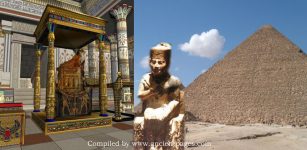 Why Should There Be An Iron Throne Inside The Cheops’ Pyramid?
Archaeology | Apr 16, 2018
Why Should There Be An Iron Throne Inside The Cheops’ Pyramid?
Archaeology | Apr 16, 2018 -
 Ancient Mystery Of The Unknown White Bearded Rulers
Civilizations | Apr 21, 2020
Ancient Mystery Of The Unknown White Bearded Rulers
Civilizations | Apr 21, 2020 -
 Camas Plant Stewardship In The Pacific Northwest Dates Back More Than 3,500 Years
Archaeology | May 23, 2024
Camas Plant Stewardship In The Pacific Northwest Dates Back More Than 3,500 Years
Archaeology | May 23, 2024 -
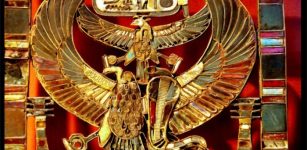 Setne Khamwas And The Book Of Magic Written By Thoth
Egyptian Mythology | Jan 20, 2016
Setne Khamwas And The Book Of Magic Written By Thoth
Egyptian Mythology | Jan 20, 2016 -
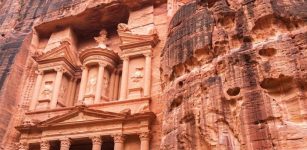 Researchers Sequenced 137 Human Genomes From The Middle East
Archaeology | Aug 6, 2021
Researchers Sequenced 137 Human Genomes From The Middle East
Archaeology | Aug 6, 2021



